You Are Made Of Stardust
You Are Made of Stardust
Though the billions of people on Earth may come from different areas, we share a common heritage: we are all made of stardust! From the carbon in our DNA to the calcium in our bones, nearly all of the elements in our bodies were forged in the fiery hearts and death throes of stars.
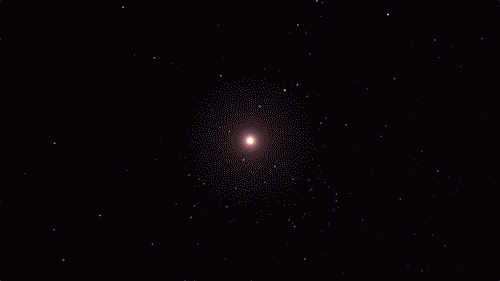
The building blocks for humans, and even our planet, wouldn’t exist if it weren’t for stars. If we could rewind the universe back almost to the very beginning, we would just see a sea of hydrogen, helium, and a tiny bit of lithium.
The first generation of stars formed from this material. There’s so much heat and pressure in a star’s core that they can fuse atoms together, forming new elements. Our DNA is made up of carbon, hydrogen, oxygen, nitrogen, and phosphorus. All those elements (except hydrogen, which has existed since shortly after the big bang) are made by stars and released into the cosmos when the stars die.

Each star comes with a limited fuel supply. When a medium-mass star runs out of fuel, it will swell up and shrug off its outer layers. Only a small, hot core called a white dwarf is left behind. The star’s cast-off debris includes elements like carbon and nitrogen. It expands out into the cosmos, possibly destined to be recycled into later generations of stars and planets. New life may be born from the ashes of stars.
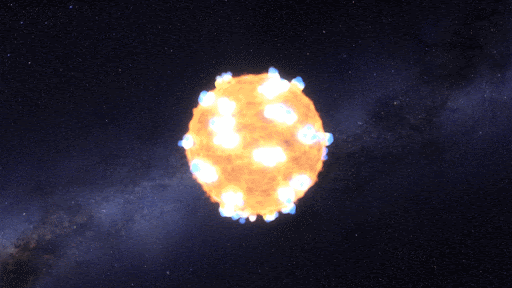
Massive stars are doomed to a more violent fate. For most of their lives, stars are balanced between the outward pressure created by nuclear fusion and the inward pull of gravity. When a massive star runs out of fuel and its nuclear processes die down, it completely throws the star out of balance. The result? An explosion!
Supernova explosions create such intense conditions that even more elements can form. The oxygen we breathe and essential minerals like magnesium and potassium are flung into space by these supernovas.
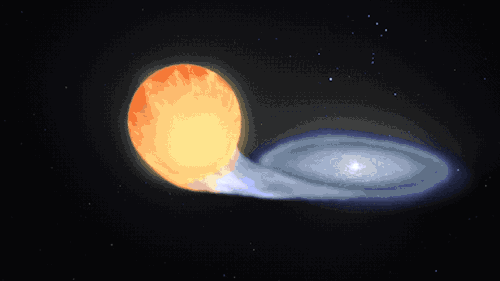
Supernovas can also occur another way in binary, or double-star, systems. When a white dwarf steals material from its companion, it can throw everything off balance too and lead to another kind of cataclysmic supernova. Our Nancy Grace Roman Space Telescope will study these stellar explosions to figure out what’s speeding up the universe’s expansion.
This kind of explosion creates calcium – the mineral we need most in our bodies – and trace minerals that we only need a little of, like zinc and manganese. It also produces iron, which is found in our blood and also makes up the bulk of our planet’s mass!

A supernova will either leave behind a black hole or a neutron star – the superdense core of an exploded star. When two neutron stars collide, it showers the cosmos in elements like silver, gold, iodine, uranium, and plutonium.

Some elements only come from stars indirectly. Cosmic rays are nuclei (the central parts of atoms) that have been boosted to high speed by the most energetic events in the universe. When they collide with atoms, the impact can break them apart, forming simpler elements. That’s how we get boron and beryllium – from breaking star-made atoms into smaller ones.
Half a dozen other elements are created by radioactive decay. Some elements are radioactive, which means their nuclei are unstable. They naturally break down to form simpler elements by emitting radiation and particles. That’s how we get elements like radium. The rest are made by humans in labs by slamming atoms of lighter elements together at super high speeds to form heavier ones. We can fuse together elements made by stars to create exotic, short-lived elements like seaborgium and einsteinium.
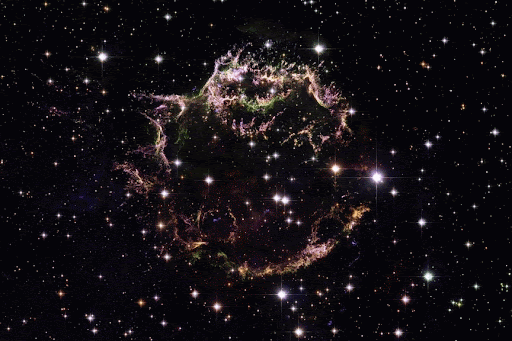
From some of the most cataclysmic events in the cosmos comes all of the beauty we see here on Earth. Life, and even our planet, wouldn’t have formed without them! But we still have lots of questions about these stellar factories.
In 2006, our Stardust spacecraft returned to Earth containing tiny particles of interstellar dust that originated in distant stars, light-years away – the first star dust to ever be collected from space and returned for study. You can help us identify and study the composition of these tiny, elusive particles through our Stardust@Home Citizen Science project.
Our upcoming Roman Space Telescope will help us learn more about how elements were created and distributed throughout galaxies, all while exploring many other cosmic questions. Learn more about the exciting science this mission will investigate on Twitter and Facebook.
Make sure to follow us on Tumblr for your regular dose of space!
More Posts from Donutdomain and Others





I wasn’t happy with the painting explanation I threw together the other day and I keep thinking of steps/important notes I should have included, so I made this more detailed version today! This is more or less how I paint, and the main things I keep in mind when I paint. Originally I was just going to “add a few more details” to the original tutorial, but I kept thinking of stuff and went a little bit nuts trying to phrase everything in a way that makes sense.
there are many incredible tutorials about digital (and traditional) painting, color theory, light and shadow, etc out there– I want to urge anyone interested in learning more about this stuff to go seek out professional advice! Painting is really, really complicated, and I’m absolutely still learning how it works and how to do it good. This is just m’thoughts and some images to go with them.



did a quick colouring tutorial for someone so dropping it here

i learned that the Sun is 99.86% of all mass in our solar system. Every other planet, asteroid, and comet only adds up to 7/50th of a single percent (x)
Writing Tips
Descriptions in Between Dialogue
✧
⤠ how characters interact with the environment
⇝ moving something, picking something up, looking somewhere
⤠ how the environment interacts with the characters
⇝ weather, other character’s actions or movements
⤠ gestures
⇝ facial expressions, body language
⤠ shifts in position
⇝ standing, sitting, leaning, shifting weight, crossing arms/legs
⤠ physical reactions
⇝ body temperature, fidgeting, heart rate, character quirks
⤠ environmental descriptions
⇝ descriptions using the five senses, setting, character’s appearances
⤠ internal dialogue
⇝ emotional reaction to what was said, reflection of past experiences, connections to other characters/settings/actions
➵ I want to reiterate… descriptions using the five senses ; when in doubt, think of the five senses your character is experiencing and pick what best moves the story forward
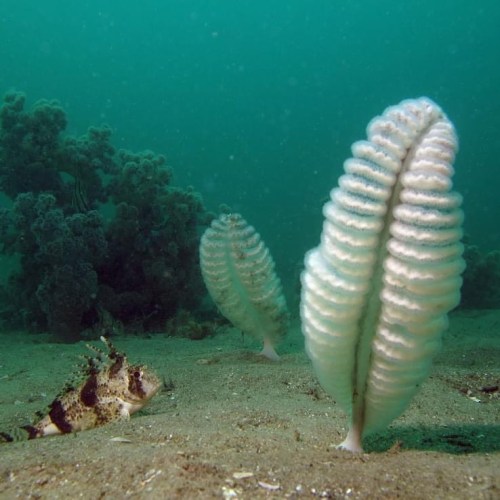
Did you know? There are about 300 species of sea pens that can be found swaying on the ocean floor around the world.🪶
You might be surprised to find out that this feather-like structure is actually a colony of polyps that work together to survive. Different polyps have different responsibilities depending on their location on the body. There are feeding polyps that catch plankton, as well as polyps that circulate water to keep the colony balanced and upright.
Photo: Richard Ling, CC BY-NC-ND 2.0, flickr; kidney sea pens (Sarcoptilus grandis) pictured
#AnimalFacts #OceanLife #SeaPen #Ocean #nature #fish #dyk #MarineLife #MarineBiology https://www.instagram.com/p/Cb_UKlsLemR/?utm_medium=tumblr


Symmetry Magazine
How JWST will test models of cold dark matter
By Madeleine O’Keefe
Two projects in JWST’s first observation cycle will probe the nature of dark matter.
On Christmas morning of 2021, an Ariane 5 CEA rocket blasted off from Kourou, French Guinea. It carried with it the largest and most sophisticated space telescope ever built: the James Webb Space Telescope.
Since then, JWST has reached its orbit about 1 million miles from Earth, unfurled its tennis-court-sized sunshield, and aligned its 18 hexagonal mirror segments. The telescope’s first images are expected by summer.
Over the next decade, JWST will make cutting-edge observations to help scientists answer myriad outstanding questions in astronomy—including questions about the nature of dark matter.
Hot, warm or cold Dark matter is an enigmatic substance that scientists believe accounts for 85% of matter in the universe. But so far it has not been observed directly; scientists can infer dark matter’s presence only by observing its gravitational effects on normal matter.
Different theories posit different types of dark-matter particles. Dark-matter candidates considered “hot” or “warm” are particles that would have moved so quickly in the early universe that gravity would not have been able to confine them. On the other hand, dark-matter candidates considered “cold” are thought to have moved so slowly that gravity would have formed them into small dark-matter structures that eventually would have coalesced into larger, “clumpy” ones.
“Decades’ worth of computer simulations have tested how structure forms and grows under the hypothesis of cold dark matter,” says Matthew Walker, an associate professor of physics at Carnegie Mellon University.
Cold dark-matter simulations show dark matter clumping into small blobs, which encounter other blobs and merge together, continually snowballing until large structures like the Milky Way are formed. These gravitationally bound blobs of dark matter are known as halos.
JWST can see your halo Anna Nierenberg, assistant professor of physics at University of California, Merced, was awarded 39 hours of observing time during JWST’s Cycle 1 to look for small dark-matter halos.
Many models, including the baseline dark-matter model, predict the existence of small (107 solar mass) halos that do not actually contain galaxies. Such a halo would “just be a blob of dark matter” with no stars inside it, Nierenberg says.
If there are no stars within these blobs of invisible material, how can we even try to detect them? Nierenberg and her team of nearly 20 scientists in the US, Canada, the United Kingdom, Switzerland, Spain, Belgium and Chile are using a phenomenon called gravitational lensing.
Born of Albert Einstein’s theory of general relativity, gravitational lensing says that matter bends spacetime and, subsequently, any light that encounters it. If light from a distant source travels through the universe toward Earth and passes by a massive object—such as a blob of dark matter—the light will be warped around it. If the in-between object is massive enough, the light is deflected in such a way that we’ll see up to four images of the light source appearing around the mass.
Nierenberg’s group will measure the number of small dark-matter halos by observing a sample of quasars (supermassive black holes at cosmological distances surrounded by dusty accretion disks) that have been gravitationally lensed. Detecting small halos would be a triumph for the cold dark-matter theory; conversely, not detecting small halos would imply that cold dark matter does not exist.
Because the light from these quasars must travel a great distance in an ever-expanding universe, it is stretched along the way, pulling its wavelengths into the infrared range. The mid-infrared wavelengths they are observing are almost impossible to see with ground-based telescopes. “We’re going to be observing with absolute reddest bands that JWST can accommodate,” Nierenberg says.
These wavelengths cannot be observed by the Hubble Space Telescope, which studies gravitational lensing at visible wavelengths. And older space-based telescopes that can see in the mid-infrared don’t have the resolution to separate the different lenses. Making these observations in mid-IR requires the high spatial resolution that only the JWST can provide, Nierenberg says.
Daniel Gilman, a postdoc at the University of Toronto and one of Nierenberg’s co-investigators, says, “The kind of data that we can get with JWST is unique and much more powerful or constraining than the kind of data that we could get with Hubble or from the ground.”
Nierenberg says, “I really believe that this is going to be a huge scientific step forward.”
Looking far and wide Walker is leading another dark-matter project in JWST’s Cycle 1, but his group didn’t apply for observing time. Instead, they are using data that JWST is collecting for other programs.
Walker’s group’s “archival research” is looking inside dwarf galaxies to find wide binary stars, systems of two stars orbiting each other at relatively large distances (on the order of one parsec, slightly less than the distance between the sun and our closest neighbor, Proxima Centauri).
“Because [wide binary stars] are so far apart, they’re very fragile systems,” says Walker. “If, say, a little dark-matter halo were to fly past a wide binary-star system, it could exchange energy with either or both of the stars in that system. And it just takes a small fraction of a fraction of a percent increase in the energy of either star to rip the pair apart.”
If Walker’s team finds wide binary stars, “we can be reasonably confident that those sub-galactic cold dark matter halos don’t exist,” he says. “And that, then, would be a real problem for the cold dark-matter model in general.”
That’s what Katharine Lee, a junior physics major at Carnegie Mellon in Walker’s group, likes about the project. “I particularly think this research is really interesting because the current framework for what we think of as the structure of dark matter is the cold dark-matter model, and the research that Professor Walker’s doing could potentially invalidate that.”
If the group did not find wide binary stars, it could be a sign that they were destroyed by dark matter. But it would not prove that they were destroyed—they may just have never formed in these dwarf galaxies in the first place.
Walker says that JWST is an ideal tool for this search because of its “exquisite sensitivity to faint objects,” as well as the telescope’s abilities to take high-quality images and distinguish pairs of sources at very small separations. And thanks to its 21-foot-diameter primary mirror, JWST will see farther than any other telescope ever built.
“I think JWST is going to give us a new and really powerful angle,” says Jorge Peñarrubia, a professor at the University of Edinburgh and one of Walker’s co-investigators. “But even if that fails, we’ll find other ways.”
Indeed, there are many other techniques that scientists use to search for dark matter, including direct searches by physics experiments. And both Nierenberg and Walker are using gravitational lensing and wide binary-star methods on data from the Hubble Space Telescope while they wait for JWST to open its eyes.
Future JWST science programs might further explore the mysteries of dark matter, whether through gravitational lensing or perhaps by observing statistics of galaxy evolution that scientists can then compare to dark-matter theories.
“We don’t lack theories of what dark matter could be. There are a lot of them,” Gilman says. “What we lack are observations that wield a lot of constraining power over these theories. And that’s something that JWST is going to give us.”
Illustration by Sandbox Studio, Chicago with Olena Shmahalo
seeing the photos from Webb up against photos from Hubble just makes me… I don’t even know like, wow! Look at that!












my color tips pdf is now available ! i had a lot of fun with this, i hope you enjoy ^^
BUY HERE or HERE
-
 kayayayayayayay liked this · 1 month ago
kayayayayayayay liked this · 1 month ago -
 yeehawdimus liked this · 1 month ago
yeehawdimus liked this · 1 month ago -
 bobby76love reblogged this · 3 months ago
bobby76love reblogged this · 3 months ago -
 davinamikaelsonalwaysandforever liked this · 4 months ago
davinamikaelsonalwaysandforever liked this · 4 months ago -
 amity297 liked this · 4 months ago
amity297 liked this · 4 months ago -
 valiantsuitfury liked this · 4 months ago
valiantsuitfury liked this · 4 months ago -
 insertanepicusername liked this · 4 months ago
insertanepicusername liked this · 4 months ago -
 cosmicjester6 liked this · 4 months ago
cosmicjester6 liked this · 4 months ago -
 happybatshoeapricot liked this · 5 months ago
happybatshoeapricot liked this · 5 months ago -
 venusianguy reblogged this · 6 months ago
venusianguy reblogged this · 6 months ago -
 faithfuldissident reblogged this · 6 months ago
faithfuldissident reblogged this · 6 months ago -
 glutiamentous liked this · 6 months ago
glutiamentous liked this · 6 months ago -
 emaadsidiki liked this · 6 months ago
emaadsidiki liked this · 6 months ago -
 instantpandadefendor liked this · 6 months ago
instantpandadefendor liked this · 6 months ago -
 emstargazer reblogged this · 8 months ago
emstargazer reblogged this · 8 months ago -
 emstargazer liked this · 8 months ago
emstargazer liked this · 8 months ago -
 superjinaaaa reblogged this · 8 months ago
superjinaaaa reblogged this · 8 months ago -
 superjinaaaa liked this · 8 months ago
superjinaaaa liked this · 8 months ago -
 what-the-hell-is-going-on-here reblogged this · 8 months ago
what-the-hell-is-going-on-here reblogged this · 8 months ago -
 dobyina liked this · 9 months ago
dobyina liked this · 9 months ago -
 ruththe-reckless reblogged this · 10 months ago
ruththe-reckless reblogged this · 10 months ago -
 pleasantinfluencerrebel reblogged this · 10 months ago
pleasantinfluencerrebel reblogged this · 10 months ago -
 beyourselfchulanmaria reblogged this · 10 months ago
beyourselfchulanmaria reblogged this · 10 months ago -
 panfriedgarlicbread reblogged this · 11 months ago
panfriedgarlicbread reblogged this · 11 months ago -
 4thethingsilike reblogged this · 11 months ago
4thethingsilike reblogged this · 11 months ago -
 4thethingsilike reblogged this · 11 months ago
4thethingsilike reblogged this · 11 months ago -
 not-shitposting-iswear liked this · 11 months ago
not-shitposting-iswear liked this · 11 months ago -
 silverprimal liked this · 11 months ago
silverprimal liked this · 11 months ago -
 looookingup reblogged this · 11 months ago
looookingup reblogged this · 11 months ago -
 misskohane liked this · 11 months ago
misskohane liked this · 11 months ago -
 bboogeyman reblogged this · 1 year ago
bboogeyman reblogged this · 1 year ago -
 thealicedoll liked this · 1 year ago
thealicedoll liked this · 1 year ago -
 starsidexiv liked this · 1 year ago
starsidexiv liked this · 1 year ago -
 guthearse reblogged this · 1 year ago
guthearse reblogged this · 1 year ago -
 lululumune liked this · 1 year ago
lululumune liked this · 1 year ago -
 blog-dylan liked this · 1 year ago
blog-dylan liked this · 1 year ago -
 happymeishappylife reblogged this · 1 year ago
happymeishappylife reblogged this · 1 year ago -
 whitestnoise reblogged this · 1 year ago
whitestnoise reblogged this · 1 year ago -
 rituals-in-starlight liked this · 1 year ago
rituals-in-starlight liked this · 1 year ago -
 irllka liked this · 1 year ago
irllka liked this · 1 year ago -
 uwubarca reblogged this · 1 year ago
uwubarca reblogged this · 1 year ago

I just reblog fun facts/tipsScience, nature, geology facts etc! + art & writing tips!
67 posts